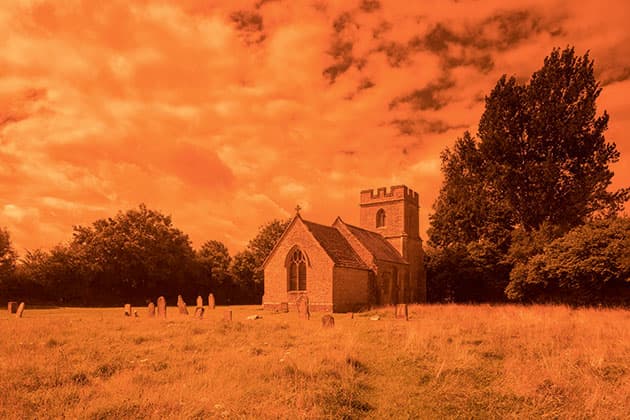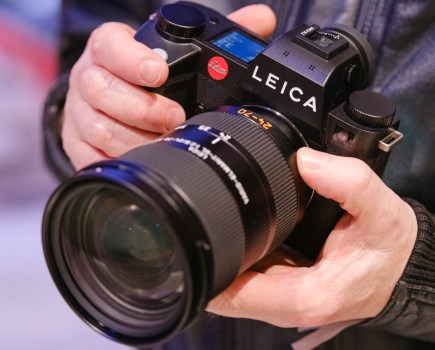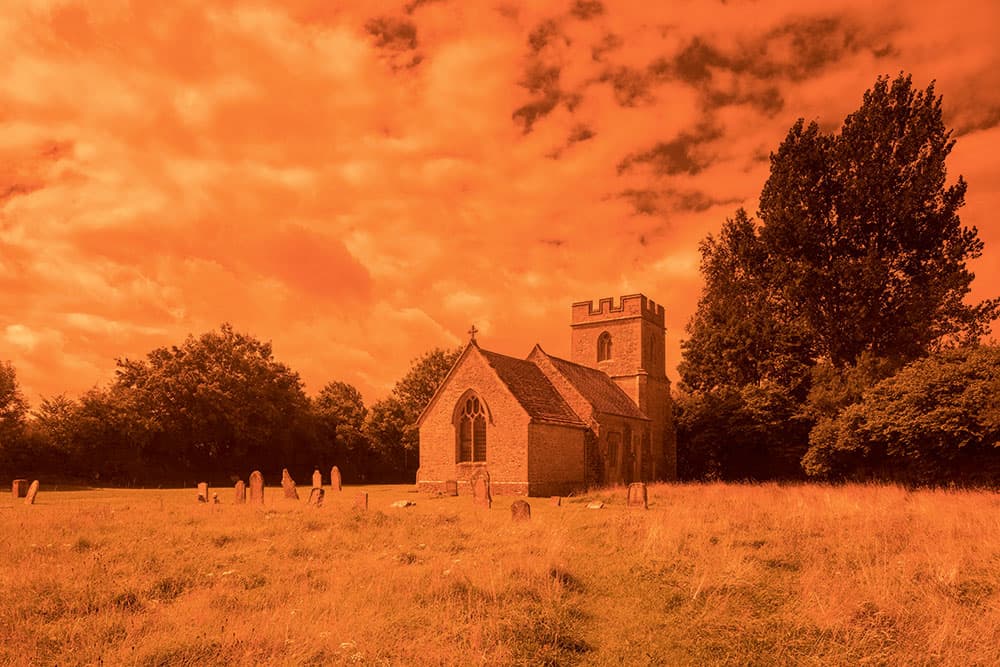
The Church at Holnest, Dorset, shot using the gloriously dated effect of a red filter. Canon EOS 5D Mark IV, 24mm TS-E lens, 1/15sec at f/13, ISO 100
I am ashamed to admit that in the past I did something I now bitterly regret. The time has come to own up, to the shocking truth. In 1987, or thereabouts, I used a graduated tobacco filter. There, it’s out; but that’s not all, it gets worse.
I also owned, and used, a Champagne filter. It was an 81EF warming and diffusing filter in one; I dubbed it my soft poo. I even deployed it in Venice, thereby ruining an evocative shot that may still stand the test of time were it not blighted with the unappealing brown tinge and tacky diffusion of soft poo. I now realise what a heinous crime against photography that was.
The case for the prosecution is overwhelming, but in my defence I must plead that I was not alone; everyone back then did it. Seemingly, all car ads in the 1980s featured a long and winding road under a lurid tobacco sky. Hollywood got in on the act, too; remember Top Gun? Advertising loved the soft poo look; to shoot warm and soft was to be at the cutting edge of creativity. Back then the future was bright, the future was orange, and any self-respecting photographer packed an array of filters in their Billingham bag, ranging from warm-ups to cool downs, with diffusers, combination grads and assorted gels thrown in.
Thankfully, time has moved on, and such heavy-handed filtration now looks hopelessly passé to all except the producers of Top Gear. So, too, has the technology. Far more advanced effects can now be reproduced with infinitely more control and subtlety in post-production. But could the filters still be of interest? Retro is all the rage after all – just look at the popularity of vinyl records, and Leicas. So, armed with some hideous filters dating from a 1982 Cokin catalogue, I donned flares and a large collared flowery shirt to venture out exploring the retro filter look. Beware: this feature really should come with a Public Health Warning.
Reach for the starburst
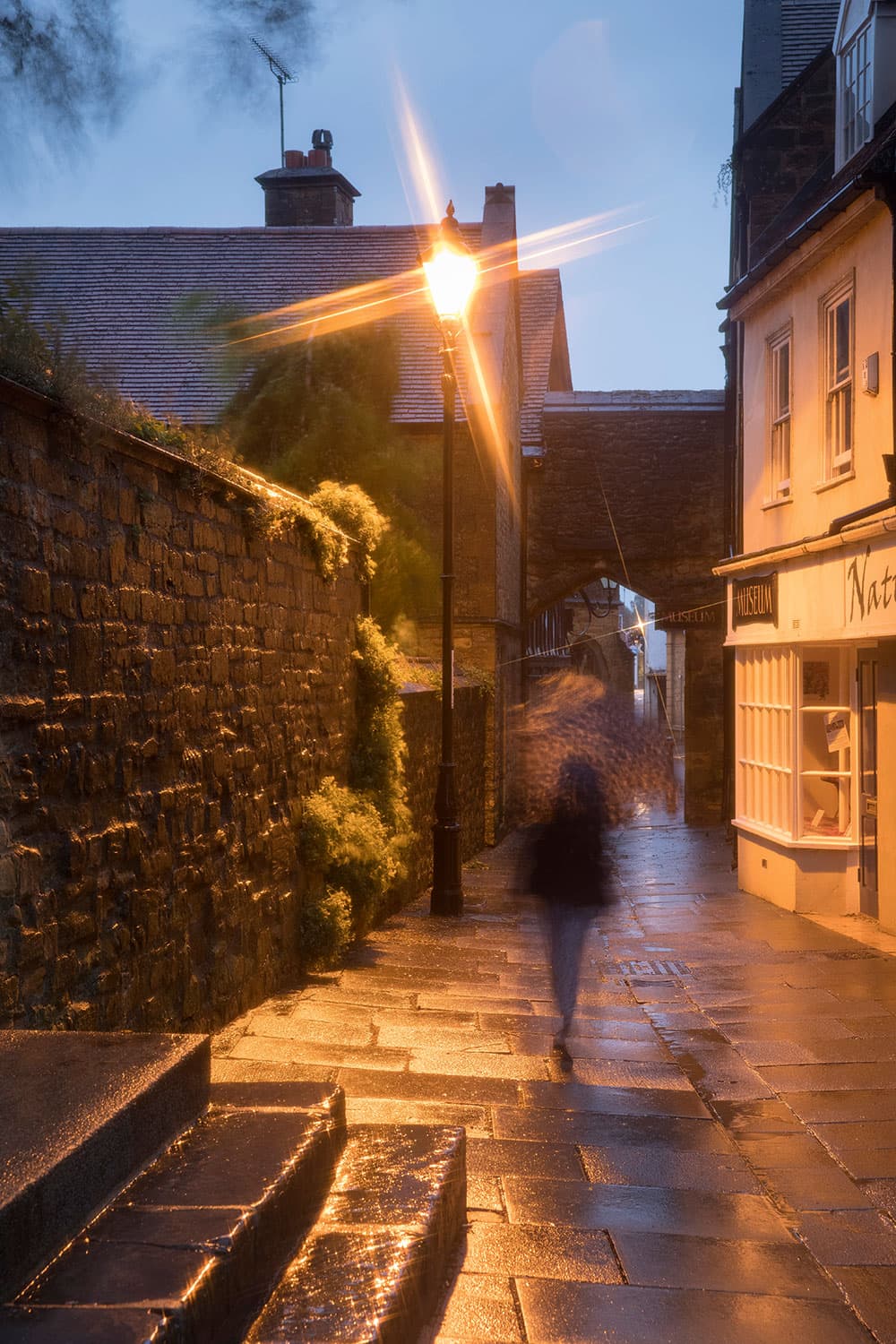
Wendy in the rain on a summer evening in Church Lane, Sherborne, Dorset. Shot with a starburst filter. Canon EOS 5D Mark IV, 24-70mm lens, 2secs at f/8, ISO 400, starburst filter
Sherborne on a wet summer’s evening. Following a curry, I persuade Wendy (my wife) to walk up and down the narrow lane by the abbey in the pouring rain as dusk settles. Of course, she’s overjoyed at the prospect. As the town lights come on, their reflections glisten warmly off the wet pavement, contrasting appealingly with the residual light of the blue hour. I quickly bag a shot, then, wait for it, reach for a starburst filter. Yes, a starburst. Even back in the 1980s, when Wendy wore shoulder pads and I sported a mullet, starbursts were viewed as pretty naff. Now look at the result. Spread highlights like a 1970s episode of Top of the Pops, with the total absence of local contrast and bite.
Holnest Church in deepest Dorset the next morning. It’s raining still, off and on, but in between there are glimpses of sunshine, and the stormy sky is laden with billowing clouds. I compose and shoot with a polariser, a truly timeless filter. I then fit the long-discarded mahogany grad I found at the back of a cupboard. Hmm, why were we so obsessed with always warming things up? The 81-series was the classic warmer; with the EF being the strongest. At college we called it the Dallas filter as it gave everyone a tan – it didn’t stop us using it, though. Now I fit a Coral warmer. Treacle, more like. Yuck. Next, an inverted green grad to boost the tones of the grass in my foreground. I glance over my shoulder. Being spotted doing this would be a fate worse than death. In for a penny, in for a pound. My pièce de résistance for the morning – a grey spot. I’m feeling nauseous.
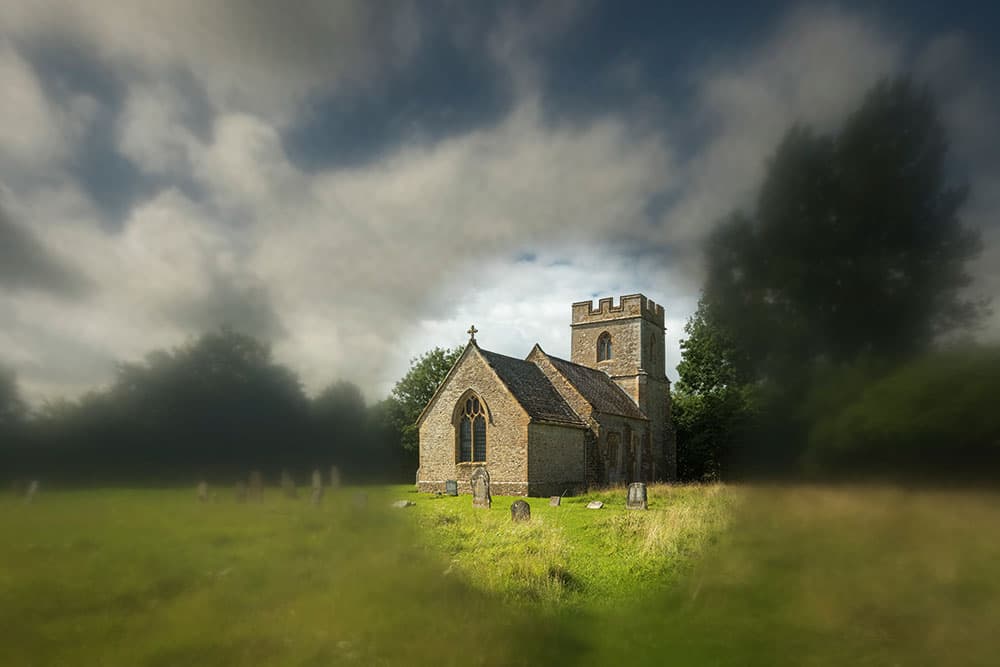
Polariser and grey spot filters. Did anyone ever think this was pretty neat? I need to lie down. Canon EOS 5D Mark IV, 24mm, TS-E lens, 1/30sec at f/13, ISO 100
The power of less
I’m now ready to confront the reality of the hideous results. All but the straight shots are gruesome, aren’t they? I don’t think I’ll be including any of these filters, save the trusty polariser, in the filter pouch on my next trip. The fact is I’m using less and less filtration anyway. I reckon I could get by with three these days: a polariser, 0.6 ND grad and a 6x ND. The need for coloured filters has long since passed, now that we can adjust white balance to suit in Lightroom. But I hardly ever do, anyway. I shoot in daylight WB and that’s that. If Mother Nature gives me cool light, then I’ll have cool pictures. So be it. Thirty years ago, I was using inverted coral grads to warm up foregrounds. Now, despite, or maybe because of, the fact we have the capability to do so much more to our images, I find that I’m doing less and less.
There’s one retro filter I’ve yet to rediscover, the one which was as much a part of the 1980s as Filofaxes, yuppies, Spitting Image and the Golf GTi – the tobacco grad. Maybe, just maybe, its warm sky look could come back. So I headed for a local hill to shoot some sheep, as you do when testing filters (cows for camera tests, horses for lenses and sheep for filters). I knew award-winning images weren’t likely, but the sky above Glastonbury Tor in the distance had some interest and mood. Now I’m looking at the results with and without the tobacco grad. Without: a cool clean sky rich in tonal detail, pure and in harmony with the light on the landscape below. With: a horribly grubby, muddy brown sky looking totally unrealistic outside of a global-warming symposium. How could we have ever thought such a look desirable?
This has all been an exercise in realising how far we have all progressed. But then again, have we really? In this era of HDR and overcooked colours, I’m not so sure. In comparison, the tobacco grad looks positively subtle. Now where did I put the soft poo?
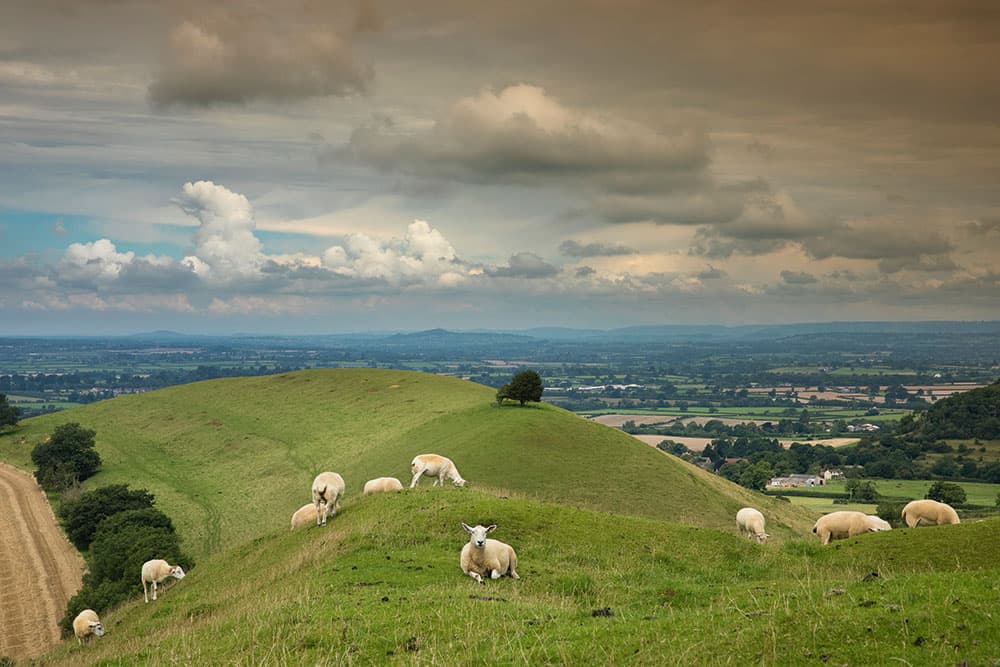
Sheep at Corton, Denham Beacon, in Somerset. The sky is blighted with a tobacco grad filter. Canon EOS 5D Mark IV, 24-70mm lens, 1/100sec at f/11, ISO 100
David Noton
David Noton is recognised as a leading landscape and travel photographer. His passion for photography, travel and the world’s beautiful places are the
defining influences that have shaped his life, work and creative approach to photography. His images sell all over the world – both as fine art photography and commercially in advertising and publishing. Visit www.davidnoton.com.
The filters
The filters used in this article came from a variety of sources including eBay and the back of David’s cupboard. Secondhand prices seem to have gone up in recent years. The starburst filter cost us £19.99, while the tobacco graduated colour filter cost us £37.95 (both from eBay). It could be time to search the back of your cupboard, and if you’re not going to use those retro bits of glass, put them up for sale!

